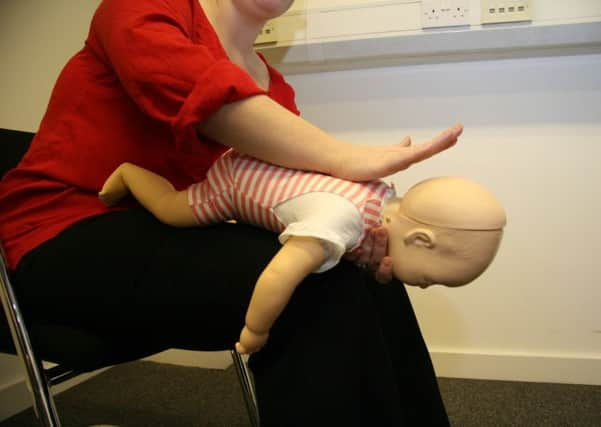ST JOHN AMBULANCE: What to do when someone is choking


Breathing is vital to life. Every time we breathe, we not only take oxygen in but breathe carbon dioxide out.
Without oxygen the cells of the body will start to die in about three minutes.
Advertisement
Hide AdAdvertisement
Hide AdChoking is caused by a foreign object that is stuck at the back of the throat that may block the throat or cause muscular spasm.
Young children especially are prone to choking.
A child may choke on food, or may put small objects into their mouth and cause a blockage of the airway.
If the blockage of the area airway is mild, the casualty should be able to clear it themselves by coughing.
If it is severe they will be unable to speak, cough, or breathe, and will eventually lose consciousness.
If the casualty is a child or adult, follow these steps:
Advertisement
Hide AdAdvertisement
Hide Ad• Ask the casualty ‘Are you choking?’ If the casualty is breathing encourage them to cough to try to remove the obstruction themselves.
• If they can’t speak, cough or breathe, bend them forward. Give up to five sharp blows between the shoulder blades with the heel of your hand. Check their mouth, but do not do a finger sweep of the mouth.
• If choking persists, stand behind the casualty. Put both arms around them and put one fist between the navel and the bottom of the breastbone. Grasp your fist with your other hand, and pull sharply inwards and upwards up to five times. Recheck the mouth
• Repeat the backslaps and thrusts until the obstruction clears. If after three cycles it still has not cleared, call 999/112 for emergency help. Continue the sequence until help arrives or the obstruction is cleared, or they lose consciousness. If they lose consciousness, open the airway and check breathing.
If the casualty is an infant, follow these steps:
Advertisement
Hide AdAdvertisement
Hide Ad• Lay the baby face down along your thigh, supported by your arm.
• Give up to five back blows between the shoulder blades with the heel of your hand, check the mouth for any obstruction and remove, but don’t stick your fingers down the throat.
• If the obstruction hasn’t cleared, turn the baby on their back. Place two fingers on the centre of the infant’s chest and push inwards and upwards sharply against the breastbone. Check the mouth for any obstruction and remove. Repeat up to five times.
• If the obstruction doesn’t clear, repeat the backslaps and thrusts until the obstruction clears. If after three cycles it still has not cleared, call 999/112 for emergency help. Continue the sequence until help arrives.
Advertisement
Hide AdAdvertisement
Hide Ad• For those looking for quick, easily accessible first aid information, the St John Ambulance app is available free on smartphones and the website (www.sja.org.uk) offers demo videos, an interactive game, and lots of free advice. For more information about first aid courses please call 0303 003 0101.